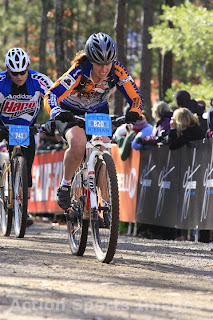Mistake #3: Downplaying the Role of Nutrition
Food is my achilles heal. Doughy breads and pastas are my crutch. And I truly believe down deep in the center of my soft core that Karamel Sutra makes everything better—cures the flu, can turn the ledger ink from red back to black, can heal a marital spat—its truly a miracle medicine.Unfortunately its "miracle" lies in the placebo effect, we all know what a diet full of bread and ice cream will really do to someone.
On the flip side, when I am following a clean diet it is the single component that has the greatest and fastest impact on improving performance.
I am not a Sports Nutritionist, I have no licensing or professional education. All I have is my personal experiments and knowledge gleaned from Google searches.
Finding a proper balance while regularly doing high-intensity workouts or long endurance rides can be challenging. It's not unusual to get to the evening and be craving a large, heavy meal. Or sometimes I'll find my hunger carries over into the next day and I over-refuel. It's true I burn a lot of calories during those workouts, but in my personal experience, burning 2,000+ calories on a ride is not equal to 2,000+ calories of pizza and beer post-ride.
I know some people that can get away with that. That's never worked for my waistline.
This is what has worked best for me in the past:
Fueling for the workout DURING the workout. The rest of the day eat a normal, healthy, clean diet of lean proteins and lots and lots of vegetables.
What this means for me is that I always have a sports drink in my water bottle and carry some food. I try to take in about 100-200 calories an hour, depending on intensity and duration of the workout. The following is my basic nutritional plan (while eating a lower calorie diet high in vegetable content):
3 mile jog around the neighborhood = 50-100 calories of Endura (or similar) post-run
6 mile run / 60 minute bike ride = 100-150 calories of Endura
90 min ride / 9 mile run = 200-250 calories (100-150 from Endura, 100 from food)
2 hr ride (mod. intensity) = 300 calories (200 from Endura, 100 from food)
2 hr high intensity = 300 calories during + 100 post-ride (banana, chocolate almond milk, etc)
3+ hours = 150 calories from Endura/per hour and 100+ from food every 60-90 minutes
Following this guideline for during workout nutrition I have been able to curb post-ride starvation (which tends to result in post-ride over-indulgence and face-stuffing) while also maintaining high energy levels which allows for a more effective training session.
Food is such an important aspect not only for training but for overall health. Nutrients from food build and repair cells and body tissue, help maintain proper organ function, provide energy and warmth.
While food and following a nutritional meal plan will always be a challenge for me, a clean diet is something that I will never stop pursuing whether training for an event or not.




